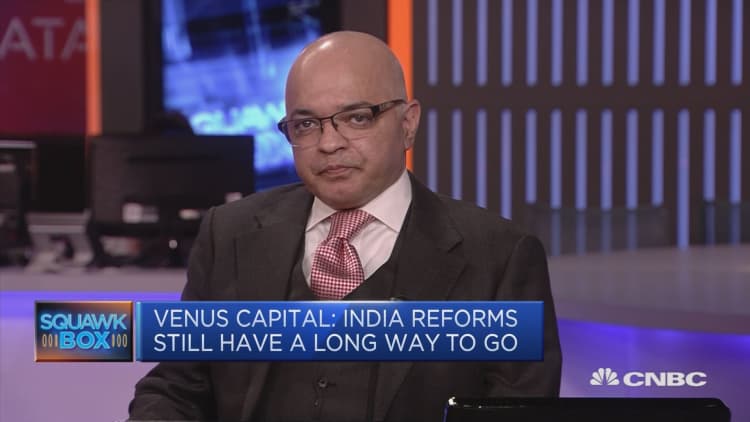Rising oil prices and hawkish policy from its central bank are the two biggest risks for India's economy in 2018, a financial expert told CNBC on Wednesday.
The increasing price of oil is "concerning" for India, said Vik Mehrotra, CEO and CIO of India-focused financial advisory firm Venus Capital. He added that this would particularly be an issue if oil goes over $70 per barrel. India is among the world's largest oil importers and rising prices could result in higher inflation.
Given that tighter monetary policy from the U.S Federal Reserve and the European Central Bank is expected to emerge in 2018, the Reserve Bank of India will adopt a "more hawkish stance" in line with this, Mehrotra added. These global headwinds mean that the Reserve Bank of India was at a point where "interest rates have bottomed out."
Risks aside, some positive economic news has come out of the world's second largest country by population in recent days.
India's factory activity grew at its fastest rate in five years in December, data released Tuesday showed. The Nikkei-Markit Manufacturing Purchasing Managers' Index rose to 54.7 in December, up on November's 52.6.

India will also become the world's fifth largest economy in dollar terms in 2018, the Centre for Economics and Business Research has predicted. In a report released in late December, the consultancy anticipated that India would outstrip Britain and France this year.
Mehrotra was optimistic on India overall, saying that 7 to 7.5 percent gross domestic product (GDP) growth in 2018 was achievable. According to the International Monetary Fund, India's GDP growth in 2017 was 6.7 percent, down from 7.1 percent in 2016.
But, Mehrotra added: "A lot of structural reforms in terms of laws have to be put in place before (Prime Minister Narendra Modi's growth agenda) can really regain momentum."
Modi's landmark Goods and Services Tax (GST) was implemented in August last year, effectively rendering India a single market after decades of separate tax rates imposed by individual states. Despite initial stumbling blocks after its implementation, "some clarity has emerged from the income tax authorities which is much better for foreign investors," Mehrotra said.
Mehrotra explained his optimism by saying that India's consumption story was "intact" with "more than half a billion people consuming," alongside a large young population. "The world is watching, the allocators are watching India," he said.

